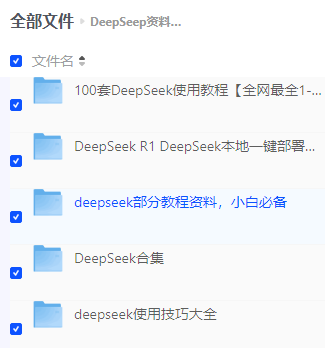【树莓派 Pico 基于MicroPython编程Thonny开发】
【树莓派 Pico 基于MicroPython编程Thonny开发】
- 1. MicroPython 介绍
- 2. 入门
-
- 2.1 硬件设置
- 2.2 软件设置
- 3. RP2040 连接到 PC 并点亮
-
- 3.1 步骤 1
- 3.2 步骤 2
- 3.3 步骤 3
- 4. IIC 连接RP2040在SSD1306显示
-
- 4.1 硬件连接
- 5. 其他资源
1. MicroPython 介绍
MicroPython是具有部分原生代码编译功能的 Python 解释器。MicroPython 实现了 Python 3.4 和 Python 3.5 及更高版本的一些精选功能,用于嵌入式处理器和受限系统。它与 CPython 不同,您可以在此处阅读有关差异的更多信息。

- MicroPython 是 Python 3编程语言的精简高效实现,其中包括 Python 标准库的一小部分,并且经过优化,可在微控制器和受限环境中运行。
- MicroPython pyboard是在裸机上运行 MicroPython 的紧凑型电子电路板,为您提供可用于控制各种电子项目的低级 Python 操作系统。
- MicroPython 充满了高级功能,例如交互式提示、任意精度整数、闭包、列表推导、生成器、异常处理等等。然而,它足够紧凑,可以在 256k 的代码空间和 16k 的 RAM 内安装和运行。
- MicroPython 旨在尽可能与普通 Python 兼容,让您可以轻松地将代码从桌面传输到微控制器或嵌入式系统。

2. 入门
首先,我们将Pi RP2040 连接到计算机,并从 MicroPython 上传一个简单的代码来检查板子是否运行良好。

2.1 硬件设置
- Pi RP2040 x1
- 安卓Micro数据线 x1
- 电脑 x1
2.2 软件设置
-
步骤 1 :根据您的操作系统下载并安装最新版本的Thonny 编辑器

我的是windows,选推荐的第一个,下载地址

-
步骤 2 :启动Thonny
选择简体中文和Pi

-
步骤 3 :点击“切换至一般模式”,重新启动。

效果如下

第 4 步。连接Pi Pico,依次选择运行>配置解释器>解释器>端口,选择设备为MicroPython(Raspberry Pi Pico),端口为Try to detect prot automatically

3. RP2040 连接到 PC 并点亮

3.1 步骤 1
按住“BOOT”按钮,然后通过安卓线将RP2040连接到PC。如果运行良好,PC 上会显示“RPI-RP2”桌面。👻👻👻

3.2 步骤 2
按下“停止/重启后端”按钮,将弹出一个窗口,帮助您在板上安装 MicroPython 固件。
为您的开发板下载正确的 MicroPython UF2 文件:
- Raspberry Pi Pico
- Raspberry Pi Pico W
固件完成后,打开设备管理器查看端口。😀😀😀

端口是COM25
3.3 步骤 3
检查解释器是否一致COM25
将以下代码复制到 Thonny。
from machine import Pin, Timer led = Pin(25, Pin.OUT)Counter = 0Fun_Num = 0 def fun(tim): global Counter Counter = Counter + 1 print(Counter) led.value(Counter%2) tim = Timer(-1)tim.init(period=1000, mode=Timer.PERIODIC, callback=fun)第 4 步。通过单击“运行当前脚本”按钮上传代码。第一次,Thonny 会询问您要将代码文件保存在哪里。This Computer和Raspberry Pi Pico都很好。


如果运行良好,您将看到 LED 灯每秒打开和关闭一次。并且越来越多的输出也将显示在 Shell 中。

4. IIC 连接RP2040在SSD1306显示
在本项目中,我们将通过IIC接口连接Grove - OLED Display 0.96" (SSD1306),在Seeed Studio XIAO RP2040上演示IIC功能。
4.1 硬件连接
步骤 1。下载ssd1306.py库并用 Thonny 打开它。
# MicroPython SSD1306 OLED driver, I2C and SPI interfacesfrom micropython import constimport framebuf# register definitionsSET_CONTRAST = const(0x81)SET_ENTIRE_ON = const(0xA4)SET_NORM_INV = const(0xA6)SET_DISP = const(0xAE)SET_MEM_ADDR = const(0x20)SET_COL_ADDR = const(0x21)SET_PAGE_ADDR = const(0x22)SET_DISP_START_LINE = const(0x40)SET_SEG_REMAP = const(0xA0)SET_MUX_RATIO = const(0xA8)SET_COM_OUT_DIR = const(0xC0)SET_DISP_OFFSET = const(0xD3)SET_COM_PIN_CFG = const(0xDA)SET_DISP_CLK_DIV = const(0xD5)SET_PRECHARGE = const(0xD9)SET_VCOM_DESEL = const(0xDB)SET_CHARGE_PUMP = const(0x8D)# Subclassing FrameBuffer provides support for graphics primitives# http://docs.micropython.org/en/latest/pyboard/library/framebuf.htmlclass SSD1306(framebuf.FrameBuffer): def __init__(self, width, height, external_vcc): self.width = width self.height = height self.external_vcc = external_vcc self.pages = self.height // 8 self.buffer = bytearray(self.pages * self.width) super().__init__(self.buffer, self.width, self.height, framebuf.MONO_VLSB) self.init_display() def init_display(self): for cmd in ( SET_DISP | 0x00, # off # address setting SET_MEM_ADDR, 0x00, # horizontal # resolution and layout SET_DISP_START_LINE | 0x00, SET_SEG_REMAP | 0x01, # column addr 127 mapped to SEG0 SET_MUX_RATIO, self.height - 1, SET_COM_OUT_DIR | 0x08, # scan from COM[N] to COM0 SET_DISP_OFFSET, 0x00, SET_COM_PIN_CFG, 0x02 if self.width > 2 * self.height else 0x12, # timing and driving scheme SET_DISP_CLK_DIV, 0x80, SET_PRECHARGE, 0x22 if self.external_vcc else 0xF1, SET_VCOM_DESEL, 0x30, # 0.83*Vcc # display SET_CONTRAST, 0xFF, # maximum SET_ENTIRE_ON, # output follows RAM contents SET_NORM_INV, # not inverted # charge pump SET_CHARGE_PUMP, 0x10 if self.external_vcc else 0x14, SET_DISP | 0x01, ): # on self.write_cmd(cmd) self.fill(0) self.show() def poweroff(self): self.write_cmd(SET_DISP | 0x00) def poweron(self): self.write_cmd(SET_DISP | 0x01) def contrast(self, contrast): self.write_cmd(SET_CONTRAST) self.write_cmd(contrast) def invert(self, invert): self.write_cmd(SET_NORM_INV | (invert & 1)) def show(self): x0 = 0 x1 = self.width - 1 if self.width == 64: # displays with width of 64 pixels are shifted by 32 x0 += 32 x1 += 32 self.write_cmd(SET_COL_ADDR) self.write_cmd(x0) self.write_cmd(x1) self.write_cmd(SET_PAGE_ADDR) self.write_cmd(0) self.write_cmd(self.pages - 1) self.write_data(self.buffer)class SSD1306_I2C(SSD1306): def __init__(self, width, height, i2c, addr=0x3C, external_vcc=False): self.i2c = i2c self.addr = addr self.temp = bytearray(2) self.write_list = [b"\x40", None] # Co=0, D/C#=1 super().__init__(width, height, external_vcc) def write_cmd(self, cmd): self.temp[0] = 0x80 # Co=1, D/C#=0 self.temp[1] = cmd self.i2c.writeto(self.addr, self.temp) def write_data(self, buf): self.write_list[1] = buf self.i2c.writevto(self.addr, self.write_list)class SSD1306_SPI(SSD1306): def __init__(self, width, height, spi, dc, res, cs, external_vcc=False): self.rate = 10 * 1024 * 1024 dc.init(dc.OUT, value=0) res.init(res.OUT, value=0) cs.init(cs.OUT, value=1) self.spi = spi self.dc = dc self.res = res self.cs = cs import time self.res(1) time.sleep_ms(1) self.res(0) time.sleep_ms(10) self.res(1) super().__init__(width, height, external_vcc) def write_cmd(self, cmd): self.spi.init(baudrate=self.rate, polarity=0, phase=0) self.cs(1) self.dc(0) self.cs(0) self.spi.write(bytearray([cmd])) self.cs(1) def write_data(self, buf): self.spi.init(baudrate=self.rate, polarity=0, phase=0) self.cs(1) self.dc(1) self.cs(0) self.spi.write(buf) self.cs(1)步骤 2。单击“文件→另存为”并将库保存在“Raspberry Pi Pico”中
选择“Raspberry Pi Pico”作为我们保存的位置。
确保保存的文件名为“ssd1306.py”,否则将无法使用。

步骤 3。将以下代码复制到 Thonny。
from ssd1306 import SSD1306_I2Cfrom machine import Pin, I2Cfrom time import sleep i2c = I2C(1, scl=Pin(7), sda=Pin(6), freq=200000)#Grove - OLED Display 0.96" (SSD1315)oled = SSD1306_I2C(128, 64, i2c) while True: oled.fill(0)#clear oled.text("Hello,World!",0,0) oled.show() #sleep(0.5)第 4 步。通过单击“运行当前脚本”按钮上传代码。第一次,Thonny 会询问您要将代码文件保存在哪里。This Computer和Raspberry Pi Pico都很好。

接线入下
| 端口A | 板子 | 端口B | 板子 |
|---|---|---|---|
| VCC | SSD1306 | 3V3 | Pico |
| GND | SSD1306 | GND | Pico |
| SCL | SSD1306 | GPIO7 | Pico |
| SDA | SSD1306 | GPIO6 | Pico |
如果运行良好,您将看到文本“Hello,World!” 显示在屏幕上。

5. 其他资源
一些额外的库和示例代码在这里:
[ZIP] XIAO-RP2040-MicroPython-Grove.zip
MicroPython
【树莓派 Pico 基于Arduino IDE编程开发】
【树莓派 Pico 和 Pico W】


